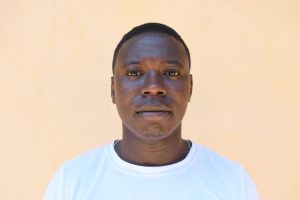The 240 people of Kalinza struggle to access sufficient water daily because their only water source is far away and requires a long, tiresome trip. Although there is a kiosk where they can collect water from a well that provides clean water, community members must walk two hours to get to the location.

"Personally, water is all I think of, and it's all that stresses me from time to time. I have no donkey, so I depend on borrowing people's donkeys to go and fetch water. At times when everyone is busy with their donkey, I have to carry water using my back, which is subjected to much unworthy suffering," said 40-year-old farmer Josephine Kasumo.

Josephine Kasumo.
But the distance is not the only problem. After community members expend so much energy getting to the well, they find long queues of people also waiting to collect water, causing them distress as they watch the day waste away. They must collect water, but the draining task leaves them with little energy or time to do anything else, interrupting even their tasks like cooking and farming.

Installing a sand dam will enable Josephine to focus on quickly collecting sufficient, safe water to meet her needs while still having the time and energy to complete her daily tasks and make progress that enriches her life.
Having a sand dam in their area will help community members access clean drinking water near their homes and give them time to engage in other life-giving activities like farming, income generation, improving community hygiene and sanitation levels, and educating the community's children.
Helping to solve the water crisis in this community will take a multi-faceted system. It requires the collaboration of the sand dam and a dug well. They will work together to create a sustainable water source that will serve this community for years to come.
Steps Toward a Solution
Our technical experts worked with the local community to identify the most effective solution to their water crisis. Together, they decided to construct a sand dam and dug well.
Sand Dam
Sand dams are sought-after, climate-smart, and lasting water solutions providing hope and resilience to communities in arid Southeastern Kenya. Think of them like giant sandboxes constructed in seasonal rivers that would typically quickly dry up after the rainy season. Instead of holding water like traditional dams, they collect sand and silt.
When infrequent rains do come, these dams catch a percentage of the river's flow, letting most of the water continue downstream to other communities. But here's the magic: the sand they collect acts like a natural filter, holding onto water long after the river's gone dry. Then, wells are constructed nearby, creating a reliable water source even during the driest times.
And the benefits don't stop there! In communities impacted by climate change, sand dams replenish groundwater and prevent soil erosion. Even during severe droughts, the consistent water supply from these sand dams allows farmers to thrive, giving way for enough food not only for their families but also to sell in local markets.
The most remarkable aspect of sand dams is how they involve the local community every step of the way, giving them a sense of ownership and pride in solving their own water shortage and managing their own water resources.
This sand dam will be connected to a dug well to make the water more accessible.
Community Education & Ownership
Hygiene and sanitation training are integral to our water projects. Training is tailored to each community's specific needs and includes key topics such as proper water handling, improved hygiene practices, disease transmission prevention, and care of the new water point. Safe water and improved hygiene habits foster a healthier future for everyone in the community. Encouraged and supported by the guidance of our team, a water user committee representative of the community's diverse members assumes responsibility for maintaining the water point, often gathering fees to ensure its upkeep.

 Sand Dam
Sand Dam
 Rehabilitation Project
Rehabilitation Project


















